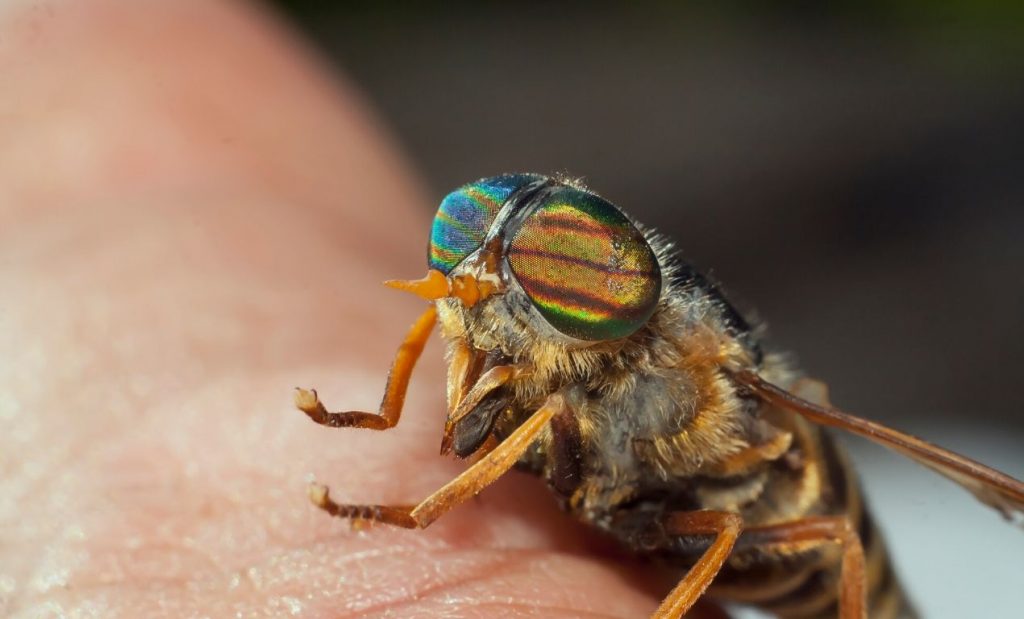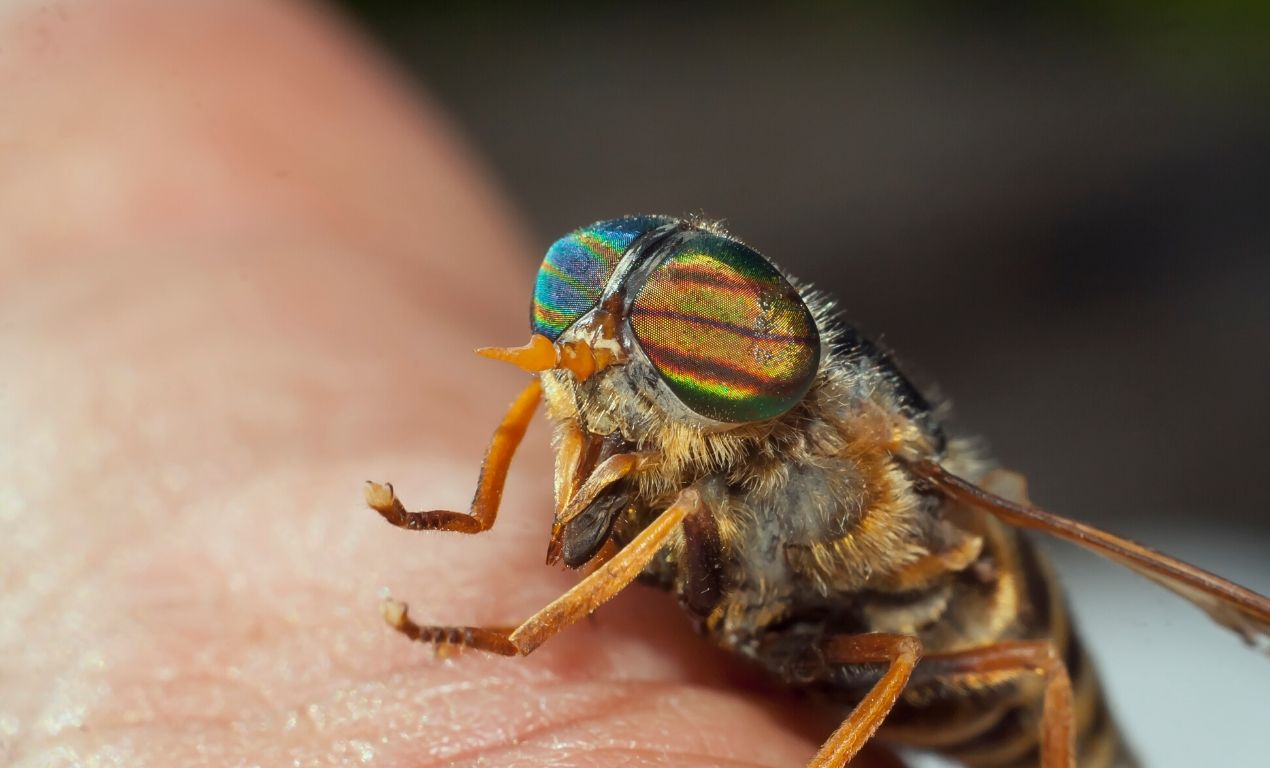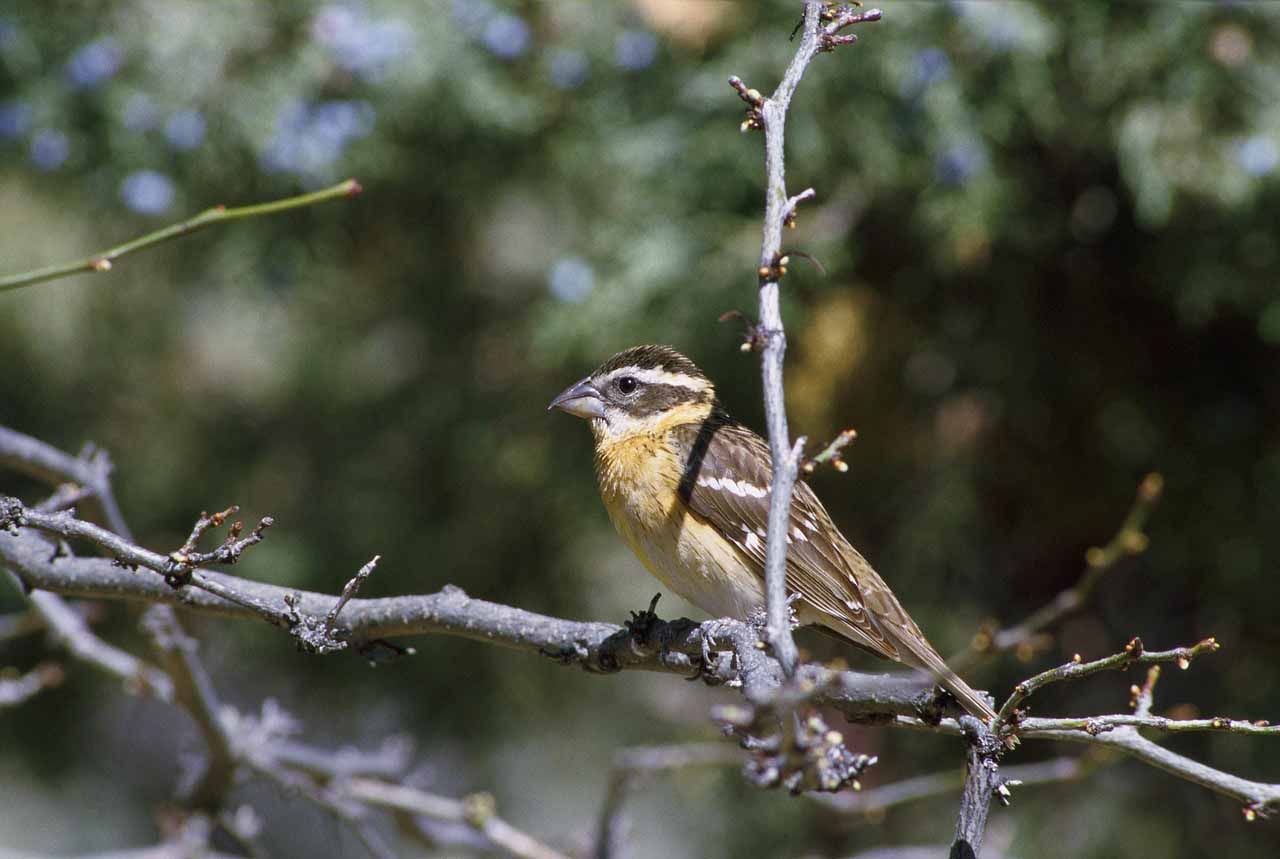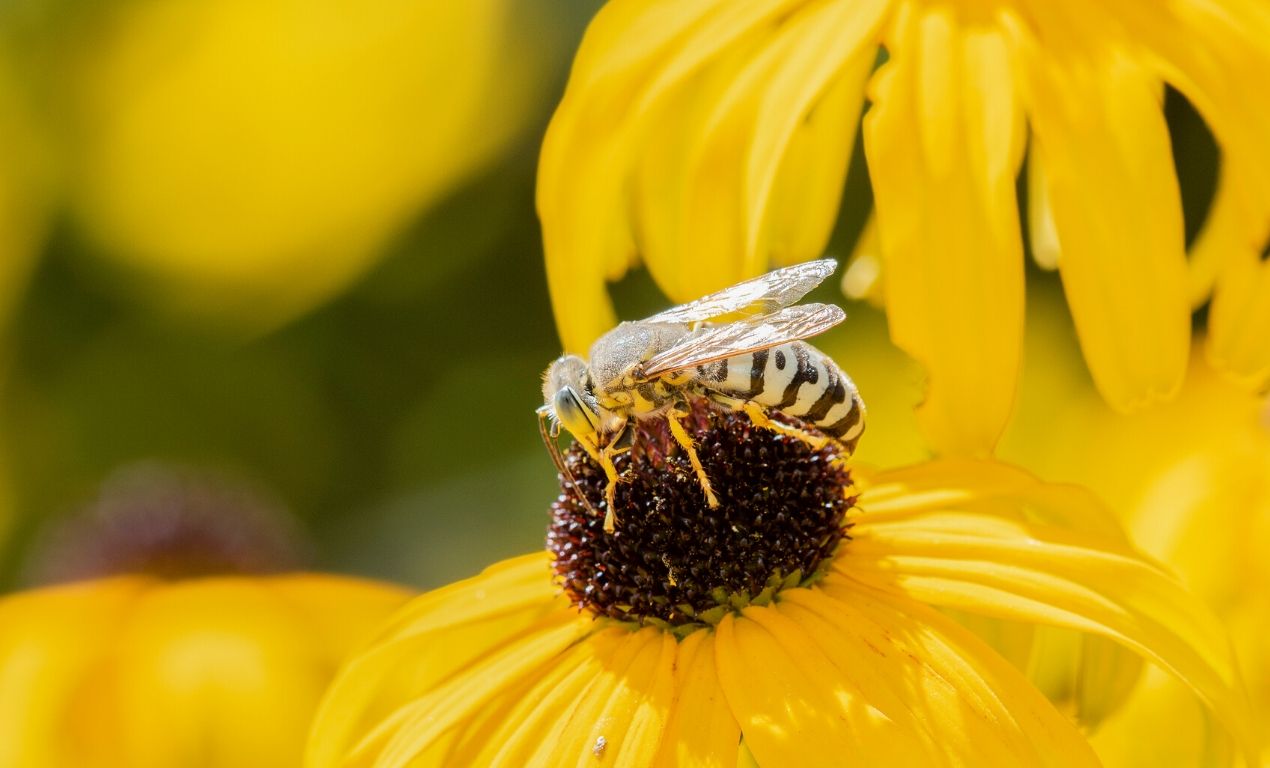
 Horseflies belong to the Diptera order and Tabanidae family. Known to be large and fly quickly, they prefer sunlight compared to shades and darkness. Animals and sometimes humans get bitten by these flies for blood. They get found across the world, except for a few islands and the polar regions.
Horseflies belong to the Diptera order and Tabanidae family. Known to be large and fly quickly, they prefer sunlight compared to shades and darkness. Animals and sometimes humans get bitten by these flies for blood. They get found across the world, except for a few islands and the polar regions.
Adult horseflies feed on nectar and organic matter of plants. The males have weak mouthparts and feed on vegetation. Females have mouthparts, which can stab, cut, and lap up blood from their prey. They require the blood to derive protein from it, for their egg formation. Due to their feeding habits, female horseflies get known to spread diseases among animals.
But what eats a horsefly? These 10 are seen quite often to attack and eat horsefly. There are other creatures who also eats them however these are seen more often and are quite common creatures themselves.
- Black-headed Grosbeak
- Sparrows
- Warblers
- Bembicini
- Parasitoid wasps
- Tachinidae
- Dragonflies
- Hornets
- Swallows
- Killdeer
Description
Adult horseflies have large compound eyes. They have short antennas and a small body. Their body length varies between 5 to 25mm and grey or brown. Mating occurs in swarms. Eggs get laid near water edges, near emerging stems, or under leaves.
Eggs of horseflies hatch into white larva, which is carnivorous. The larva has twelve segments with a small head and is cylindrical. They feed on small insects on the moist ground. To pupate, these larvae move to drier ground. They get known as green-headed monsters. This is because of their large compound eyes, which are sparkling green and other hues. The eyes of males almost meet each other, while in females, they get slightly set apart.
Horseflies pierce the skin of their prey and then cuts outwards with their scissor-like mouthparts. The blood immediately oozes out, to which gets added anti-coagulant saliva by the female housefly. They lap up the blood until they get disturbed. They take a week to digest this blood, convert into protein, and uses it to grow and lay their eggs. If they get brushed off, the female horsefly will find other prey to suck. They require a sufficient amount of blood to get digested into protein for their egg production.
The attack patterns vary with species of horseflies. Some fly low and bite below the knees, while others on the back and neck. Some are silent predators, while others make a buzzing noise.
While preying from one animal to another, they carry deadly infection, which gets passed on to unsuspecting prey. They transfer Elaeophora schneideri, which is an arterial worm or nematode. They spread filarial dermatitis among livestock, leading to sorehead disease among sheep and blindness in elks. These diseases lead to infection around the muzzle region, optic nerve damage, and, if untreated, could prove fatal. They also affect cattle with their milk production.
How To Treat Their Bite On Humans?
The main area of concern with horsefly bite is that they lead to infection. The reason is the way the wound gets created by their mouthparts. If their bite leads to infection, visit a doctor, and undertake antibiotic treatment.
The following needs to get followed for all horsefly bites:
- Do not scratch the wound. This will lead to infection.
- Clean the bitten surface with soap and warm water. Use clean cloth or swab of cotton.
- The saliva that gets secreted by horseflies leads to itching around the bitten area.
- Ease the pain by holding ice-compress over the bitten area for around ten minutes.
- Do not use any other ointment on the wound.
When horseflies bite humans, they are painful, and the area gets swollen. The pain may last for a day or two. Those who are allergic to insect bites need to take medication to alleviate their discomfort.
Some Facts About Horseflies
- They look similar to bees, except that they have only one pair of wings.
- The male horseflies cannot bite and feed on nectar and other parts of plants. They have long proboscis to suck nectar from flowers.
- The female horseflies, in addition to feeding on nectar and plants, also feed on blood. Their mouthparts have a piercing and cutting component to draw out the blood from animals and humans. They secrete saliva, which is anti-coagulant and avoids blood from clotting.
- More than 3,000 species of horseflies get found in the world.
- They are larger than simple houseflies and mostly reside in forests and areas with large livestock. These Tabanidae families of flies get considered as the world’s largest flies.
- The horsefly larva takes almost a year to turn into an adult.
- Their larvae are aggressive. They eat all types of small insects, earthworms, millipedes, and even small fishes.
- Adult horseflies live on an average of around 20-25 days.
- Most pesticides do not kill horseflies. They are immune to most chemicals that annihilate other insects. Only some traps work on them.
- They get known by different names such as bulldog flies, march flies, cleggs, breeze flies, deer flies, gadflies, and zimbs.
- Horseflies hunt their prey with their bulkiness, movement, smell, and the carbon dioxide they breathe out. They have poor eyesight, but their large compound eyes can detect motion and size.
- They have beautiful hues in their compound eyes. Though their bite hurts, their eyes have green, red, golden, and purple hues.
Horsefly Predators
Horseflies get fed by a large number of birds. Some of the common predators are:
1. Black-headed Grosbeak
 These are songbirds with conical, large, and thick bills. Mature males have an orange body with a blackhead. Their wings are white and black. The other males and females are brown with orange patches on their chests. They get found in thickets, forests, and gardens. They are migratory birds.
These are songbirds with conical, large, and thick bills. Mature males have an orange body with a blackhead. Their wings are white and black. The other males and females are brown with orange patches on their chests. They get found in thickets, forests, and gardens. They are migratory birds.
They get known to feed their young ones and protect their nest. These black-headed Grosbeak feed on horseflies and caterpillars. They also feed on pine, berries, seeds, fruits, spiders, snails, and monarch butterflies.
The grosbeak gets to sing from their perches. Both males and females sing. They get to sing while incubating, mating, or raising their chick. They forage in foliages, berry orchards, and low vegetation.
2. Sparrows
The house sparrow is a well-known species. Female and young birds are dull brown and grey, while the males have black, brown, and white patches. They usually travel in flocks and build their nests near the human habitat.
They feed on various types of insects, including the horseflies. They also feed on grains and other seeds found in your backyard and garden. They eat leftover food and also get found near your garbage bin.
3. Warblers
Warblers are greenish or dull brownish. They are small songbirds with green back and white under their belly. They can get heard than seen. They get found in marshes, woodlands, and gardens.
Warblers feed on various types of insects. Their favorite prey is the horseflies, and their population is directly dependant on them. They also get to eat berries and seeds.
4. Bembicini
 These are crabronid wasps and get also known as sand wasps. They are predators of various types of insects. They have a particular affinity for horseflies larvae. These freshly killed larvae get carried to their burrows. Their larvae get fed with these stocks of food aggregated by the adult wasps. They get known as Stictia Carolina.
These are crabronid wasps and get also known as sand wasps. They are predators of various types of insects. They have a particular affinity for horseflies larvae. These freshly killed larvae get carried to their burrows. Their larvae get fed with these stocks of food aggregated by the adult wasps. They get known as Stictia Carolina.
5. Parasitoid Wasps
Parasitoid wasps are tiny insects that feed on eggs, larvae, and pupa of various types of insects. These parasitoid wasps are mainly known to feed on eggs of horseflies.
6. Tachinidae
The Tachinidae flies get known to act as a parasite to a large number of insects’ eggs, larvae, and pupae. These parasites’ larvae are known to attach themselves to eggs of horseflies and feed on them.
7. Dragonflies
Dragonflies eat a lot. They feed on 10% of their weight every day. They feed on all types of insects, including horseflies. The nymphs of dragonflies get found near water, where they feed on all kinds of insects and larvae. The larvae of horseflies, which get noticed in these vicinities, get fed by these hungry nymphs.
8. Hornets
These insects primarily feed on nectar and other organic vegetation. However, their larvae are carnivores, who get fed with masticated insects, including horseflies. Their powerful jaws, sting, and venom paralyze their prey quickly. Their organic body got liquefied with their secreting digestive juices and fed to their young ones.
9. Swallows
They get found everywhere and also get known as saw-wings and martins. They can glide well and travel long distances. They have sharp eyes and can detect their prey from a distance. They produce a different set of calls, which indicates various sets of activities.
These fast-flying songbirds get found in blue and dull brown with white chests. They feed on grains, seeds, and many types of insects. However, their special diet is horseflies. They live near a natural water source and large flying spaces. They get known to feed on these horseflies, while in flight.
10. Killdeer
These are small birds or plover, who get found in wetlands. They feed on insects, including horseflies. Since the female horseflies frequent wetlands to lay their eggs, they fall prey to these predators.
Conclusion
Some various birds and insects prey on horseflies. While parasites, fungi, and nematodes feed on their eggs and larvae.
Welcome to my blog. I have been doing pest control for years since my house, garden and pets were always attacked by various kinds of pests and as a result I had to know proper pest control techniques that works. In this blog I share all the tips and tricks that I know and I hope you’ll find it helpful.
